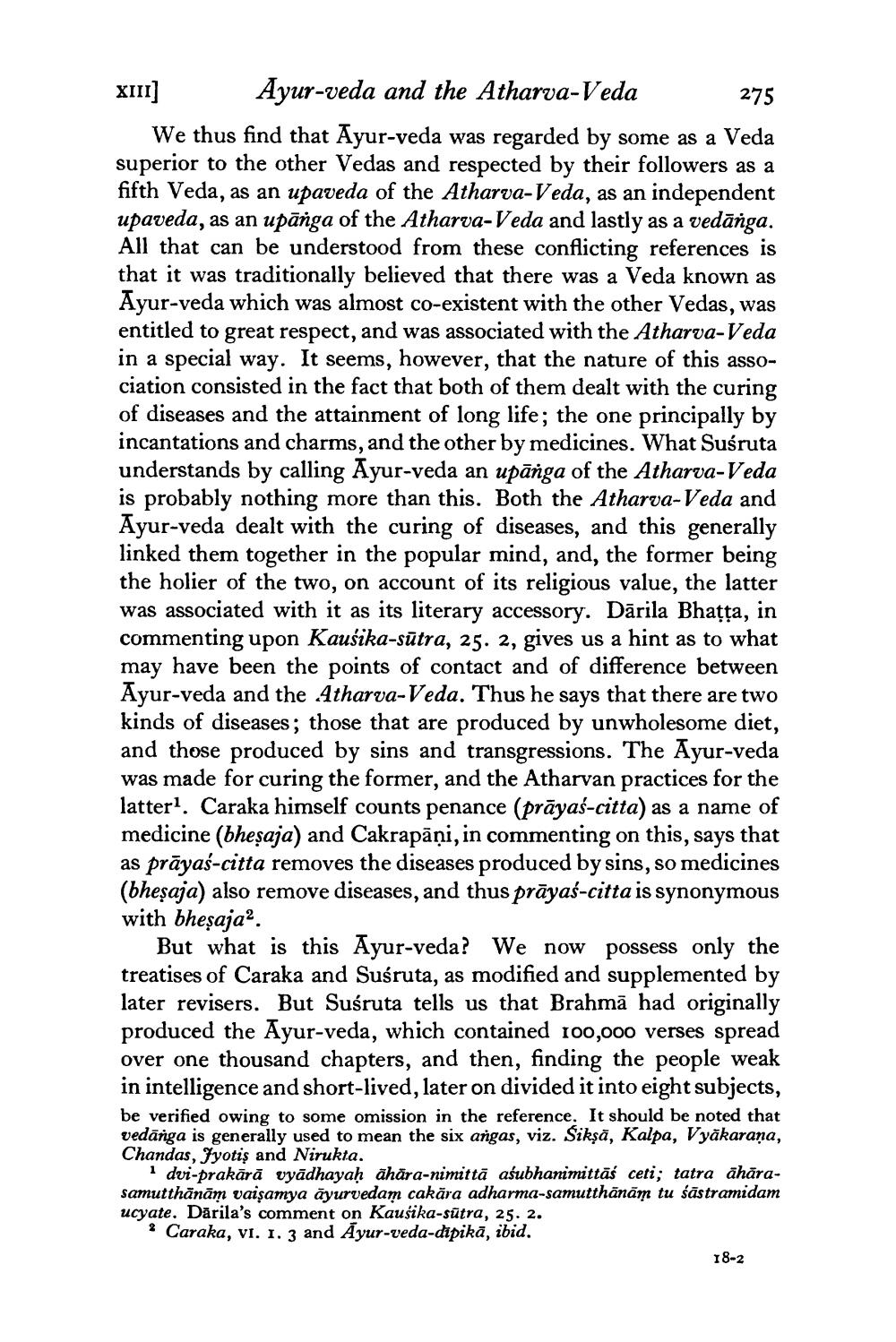________________
X11] Ayur-veda and the Atharva-Veda
275 We thus find that Ayur-veda was regarded by some as a Veda superior to the other Vedas and respected by their followers as a fifth Veda, as an upaveda of the Atharva-Veda, as an independent upaveda, as an upanga of the Atharva-Veda and lastly as a vedānga. All that can be understood from these conflicting references is that it was traditionally believed that there was a Veda known as Ayur-veda which was almost co-existent with the other Vedas, was entitled to great respect, and was associated with the Atharva-Veda in a special way. It seems, however, that the nature of this association consisted in the fact that both of them dealt with the curing of diseases and the attainment of long life; the one principally by incantations and charms, and the other by medicines. What Susruta understands by calling Ayur-veda an upānga of the Atharva-Veda is probably nothing more than this. Both the Atharva-Veda and Ayur-veda dealt with the curing of diseases, and this generally linked them together in the popular mind, and, the former being the holier of the two, on account of its religious value, the latter was associated with it as its literary accessory. Dārila Bhatta, in commenting upon Kausika-sūtra, 25. 2, gives us a hint as to what may have been the points of contact and of difference between Ayur-veda and the Atharva-Veda. Thus he says that there are two kinds of diseases; those that are produced by unwholesome diet. and those produced by sins and transgressions. The Ayur-ved was made for curing the former, and the Atharvan practices for the latter?. Caraka himself counts penance (prāyas-citta) as a name of medicine (bhesaja) and Cakrapāņi, in commenting on this, says that as prāyas-citta removes the diseases produced by sins, so medicines (bheşaja) also remove diseases, and thus prāyas-citta is synonymous with bheșaja
But what is this Ayur-veda? We now possess only the treatises of Caraka and Susruta, as modified and supplemented by later revisers. But Suśruta tells us that Brahmā had originally produced the Ayur-veda, which contained 100,000 verses spread over one thousand chapters, and then, finding the people weak in intelligence and short-lived, later on divided it into eight subjects, be verified owing to some omission in the reference. It should be noted that vedānga is generally used to mean the six angas, viz. Sikşā, Kalpa, Vyakarana, Chandas, Jyotis and Nirukta.
dvi-prakārā vyādhayah ähära-nimittă aśubhanimittās ceti; tatra āhārasamutthānām vaişamya āyurvedam cakāra adharma-samutthānām tu śāstramidam ucyate. Dārila's comment on Kausika-sutra, 25. 2. ? Caraka, vi. 1. 3 and Ayur-veda-dipikā, ibid.
18-2




